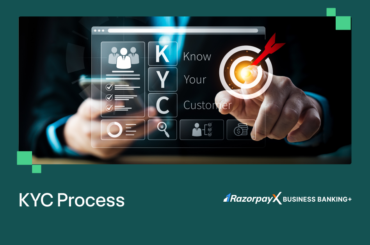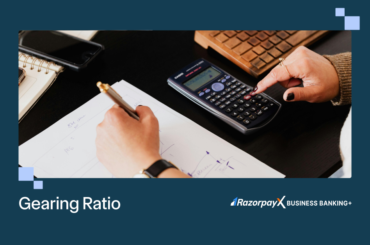Companies and businesses use financial leverage as an investment strategy to buy more assets in exchange for borrowed capital. It helps build a company’s asset base and expand the overall business. The leverage is accessed with the expectation that earning or capital gains from the newly purchased asset will exceed its cost of borrowing.
Table of Contents
What is Financial Leverage?
Financial leverage is the use of borrowed capital to fund investment in assets or projects. These assets are bought with the expectation of generating returns on risk capital.
In the case of asset-backed lending, companies use previous assets as collateral for the loan. For a cash flow loan, the creditworthiness or the credit score of the company backs the loan.
Understanding Financial Leverage and Its Importance
There are three options available for a company to finance its purchases. They use equity, debt, and leases to undertake new investments and projects. Businesses use leverage finance to invest in their future and to increase shareholder value. It is a much safer option than issuing stocks to raise capital for purchases.
Financial leverage helps both investors and owners of companies. For example, investors use it to get the maximum return on investment. It is possible by using options, futures, and margin accounts to leverage their investments. In contrast, business owners use this to finance their assets. They use debt financing to invest in their business operations.
Examples of Financial Leverage
-
Financial Leverage for a Company
Suppose a company uses ₹10,00,000 of its cash and a loan of $90,00,000 to buy a new factory worth a total of ₹1 Cr. If this new factory generates ₹15,00,000 in annual profit, it means that it uses financial leverage to generate a profit of ₹15,00,000 on a cash investment of ₹10,00,000. This means the investment in the factory generates a 150% return on its investment.
-
Financial Leverage for Personal Finances
Suppose an investor has ₹2,00,000 of their own money to invest. They take an extra amount of ₹20,00,000 as a loan from a bank at the interest rate of 6%. Next, they invest the whole ₹22,00,000 in an investment fund that has an annual return of 15% per year.
This means at the end of the financial year, the investment generated a ₹3,30,000 return. If we subtract the interest on the borrowed money, which is ₹1,20,000, and the initial investment of ₹2,00,000, the net gain from this investment stands at ₹10,000. In other words, ₹10,000 is the financial leverage.
How to Calculate Financial Leverage?
-
Total-Debt-to-Total-Assets Ratio
The Total-Debt-to-Total-Assets Ratio is a financial metric that helps to understand how many degrees of a company’s assets are funded by debt. To calculate the ratio, one must divide the company’s total debt by total assets.
The formula to calculate the ratio is:
The Total-debt-to-assets Ratio = Total Debt ÷ Total assets
To find the equity-to-asset ratio companies can subtract the result by 1.
-
Debt-to-Equity (D/E) Ratio
The debt-to-equity ratio is a financial leverage metric to compare what the company has borrowed against what it has raised from private investors. If the ratio is greater than one, it means that the company has more debt than equity. The metric varies for each company or industry.
The formula of the Debt-to-Equity Ratio is:
Debt-to-Equity Ratio = Total Debt ÷ Total Equity
-
Debt-to-EBITDA Ratio
EBITDA or Earnings Before Interest, Taxes, Depreciation, and Amortisation helps to track the underlying profitability of companies. Businesses use this ratio to understand if the debt concerning operating income is controllable or not.
If a company has a high debt-to-EBITDA, it means that the company has more debt than what it makes. The more leverage it is carrying the higher this ratio will be.
The formula for this ratio is:
Debt-to-EBITDA = Total Debt ÷ Earnings Before Interest, Taxes, Depreciation, and Amortisation
-
Equity Multiplier
The equity multiplier is calculated by dividing total assets by total equity. It helps to understand the ownership weightage of a company by analysing how its assets have been financed. If a company has a low equity multiplier it means that it has financed a large portion of its assets with equity. Thus, meaning that it is not a highly leveraged company. The equity multiplier formula is:
Equity Multiplier = Total Assets ÷Total Equity
-
Degree of Financial Leverage
The Degree of financial leverage is calculated by dividing the change in the percentage of a company’s earnings per share by its earnings before interest and taxes. The main goal of calculating this degree is to understand the sensitivity of a company’s earnings per share. A business with a higher DFL indicates a higher degree of leverage.
The formula for the degree of financial leverage is:
Degree of Financial Leverage = Percentage Change in Earnings Per Share ÷ Percentage Change in net earnings before interests or taxes.
What is a Good Financial Leverage Ratio?
A good financial leverage ratio depends on the personal preference of the investor and the company. Some investors like a bit of risk and see leverage as an opportunity. Whereas other investors discredit the idea of risk.
If a company has a debt-to-equity ratio of more than 1, it means that the company has a greater risk of debt obligations.
Advantages and Disadvantages of Financial Leverage
- Advantages
Business owners and investors use this leverage to increase their profit margins. Investors can earn more profits by using leveraged finances along with the initial upfront capital. Leveraged finances provide investors with the means to invest in more expensive and better investment options.
- Disadvantages
Using financial leverage to fund investments involves massive downside risks. Depending upon the investment, it sometimes results in huge losses more than the initial capital investment. Investors should have an extensive idea about their financial positions and the investment option they want to invest in.
Financial Leverage vs Margin
Margin is a type of financial leverage in which existing cash and securities are used as collateral to increase investors buying power. It allows investors to borrow capital from a broker to purchase securities, options, or futures contracts. They borrow this money in anticipation that they would receive higher returns in the future.
Margin is a type of financial leverage that helps to increase buying power.
Example: If an investor needs ₹100,000 in collateral to purchase ₹10,00,000 worth of securities, they can get a 1:10 margin.
Contribution of RazorpayX in Helping Businesses to Invest
RazorpayX is a new-age business banking platform that helps businesses to conduct their financial operations with ease. The banking suite simplifies invoice tracking, scheduling of payments, paying taxes, applying for loans, and viewing financial reports for businesses.
One of the essential offerings of the banking suite is the current account. When a company opens its current account with RazorpayX it enjoys unlimited transactions with next-to-nothing yearly maintenance charges.
Another great offering that sets apart RazorpayX from all its competitors is the Forex funding facility. It helps new businesses to meet their financial requirements.
Read more:
FAQs
How many types of leverages businesses can get?
Businesses can get three types of leverage: financial leverage, operating leverage, and combined leverage.
What is the Basel III leverage ratio?
The Basel III leverage ratio means that the capital measure is divided by the exposure measure.
What is the standard leverage ratio in India?
According to a mandate by RBI in 2019, the standard leverage ratio in India is 3.5%. Whereas the ratio is 4% for domestic systemically important banks.
Why is financial leverage important?
Financial leverage creates new opportunities for business owners and investors to invest. It comes with its risks. A strategically positioned investment can lead to great profits. Whereas losses incurred from the investment can sour the whole investment.





